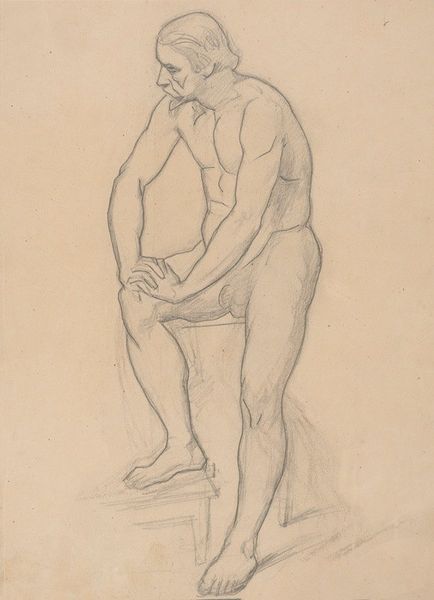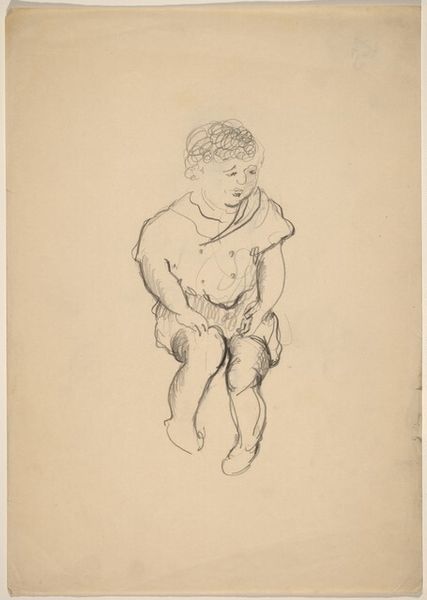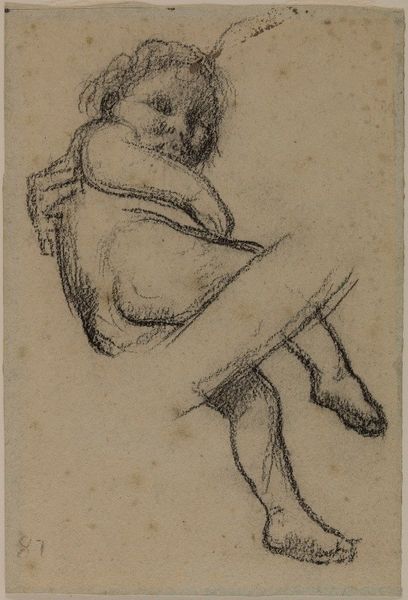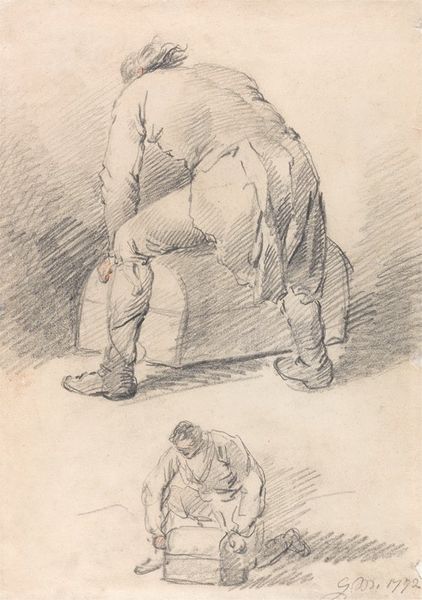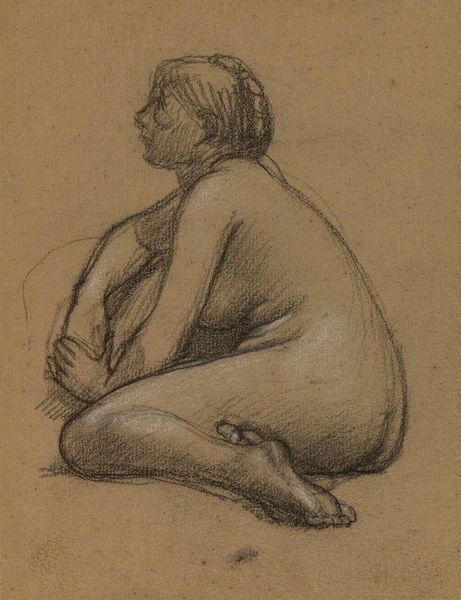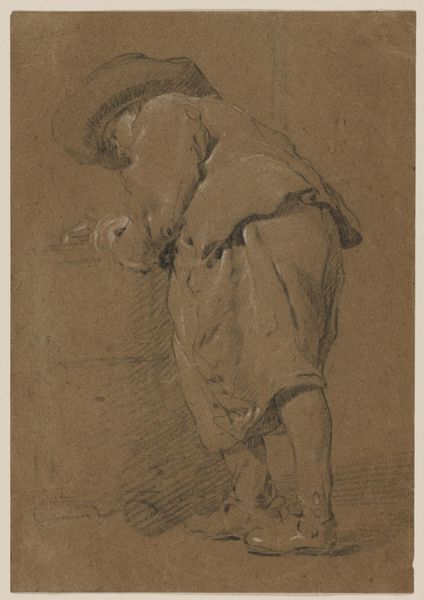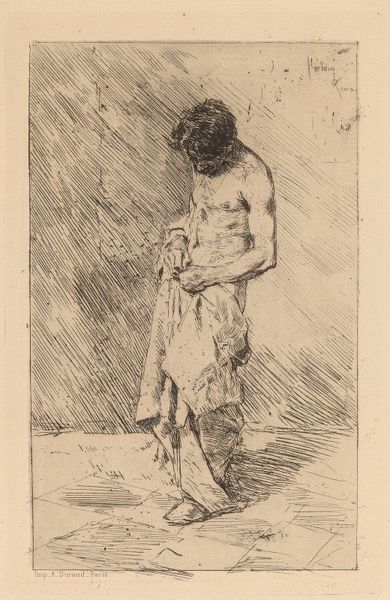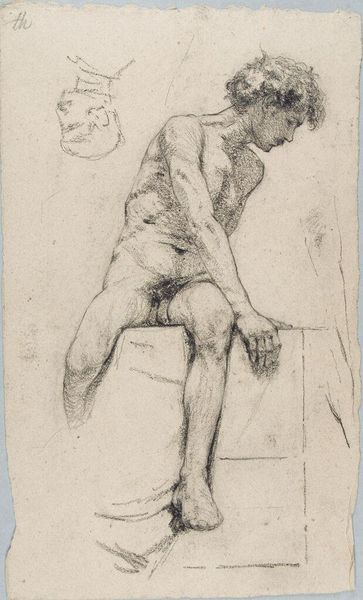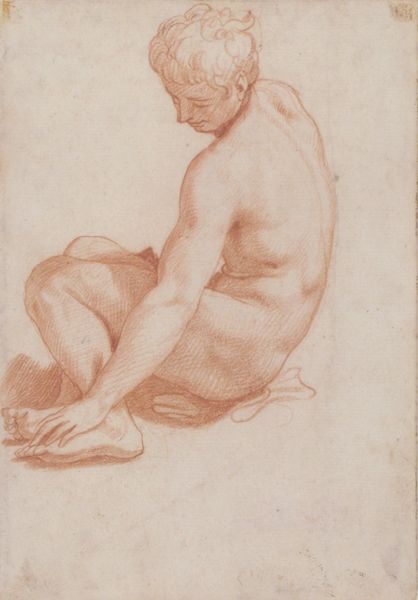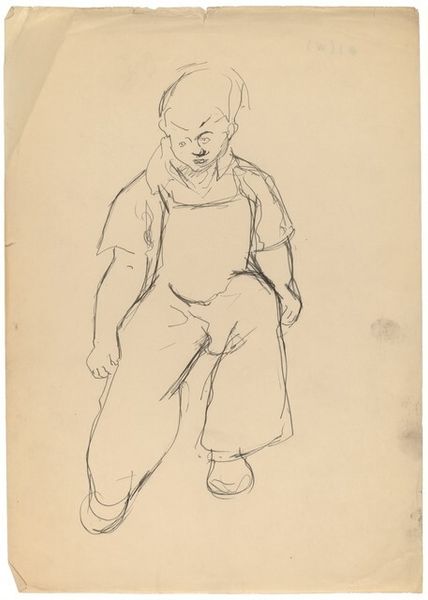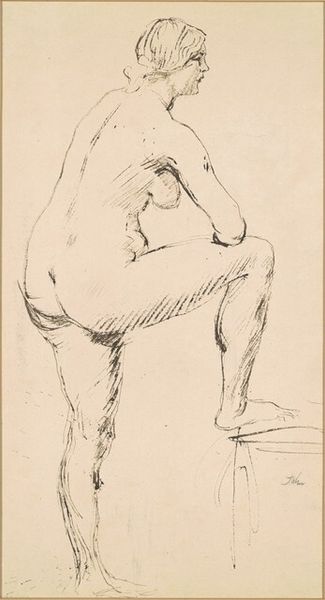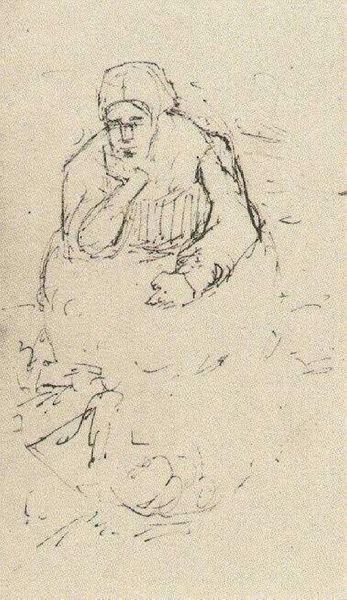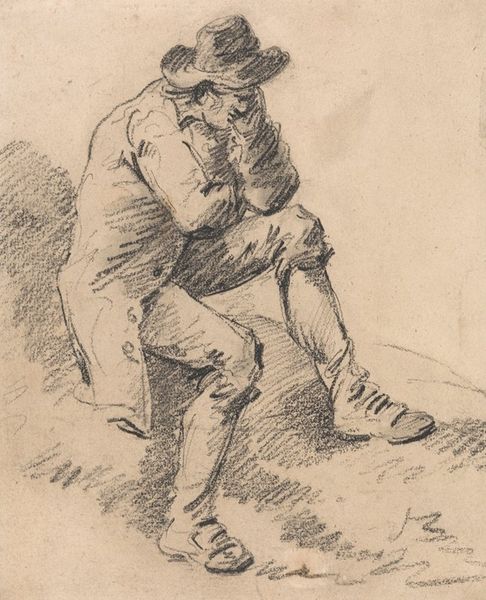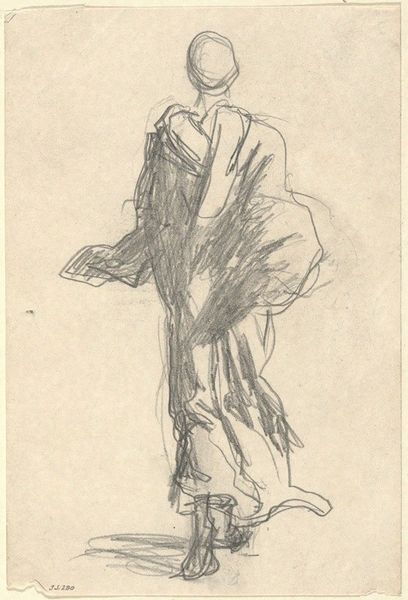
drawing, paper, ink
#
portrait
#
drawing
#
pencil sketch
#
paper
#
ink
#
pencil drawing
#
ink drawing experimentation
#
portrait drawing
#
academic-art
#
nude
#
realism
Copyright: Public Domain: Artvee
Editor: This is Helene Schjerfbeck's "Istuva pieni poika, veistos takaapäin," or "Seated Little Boy, Sculpture from Behind," created around 1877-1878. It's an ink and pencil drawing on paper. I’m struck by how raw the texture of the hatching is. It really emphasizes the form, but also feels like an exercise. What stands out to you in this piece? Curator: Well, focusing on the materiality, we can see this not just as a simple study, but as an engagement with academic practice. The nude figure, rendered in accessible materials like ink and pencil on paper, democratizes the artistic process. Editor: Democratizes it? How so? Curator: Academic figure studies were traditionally gateways to higher art forms, often involving costly materials like oils and canvas, and requiring extensive training. Schjerfbeck's use of humble materials makes artistic exploration more accessible, challenging the perceived value hierarchy between "high art" and everyday practice. Notice the quick, repeated strokes—what does that suggest about the labor involved? Editor: It feels fast, maybe even like she was practicing, rather than making a "final" work. Like she was finding the form through the act of drawing. Curator: Exactly! And isn't there something powerful about elevating that act of practice? Think about the social context. At the time, art academies were becoming increasingly standardized. Works like these demonstrate how artists navigated, and subtly critiqued, those established systems. They democratized skill development via accessible and portable processes that challenged dominant art world trends, don't you agree? Editor: I see what you mean. It’s not just the final product, but also about who gets to participate in making art. That gives me a completely new way to understand it. Curator: Precisely. By focusing on the material means of production and reception, the historical context surrounding the making of art shifts to the forefront.
Comments
No comments
Be the first to comment and join the conversation on the ultimate creative platform.
